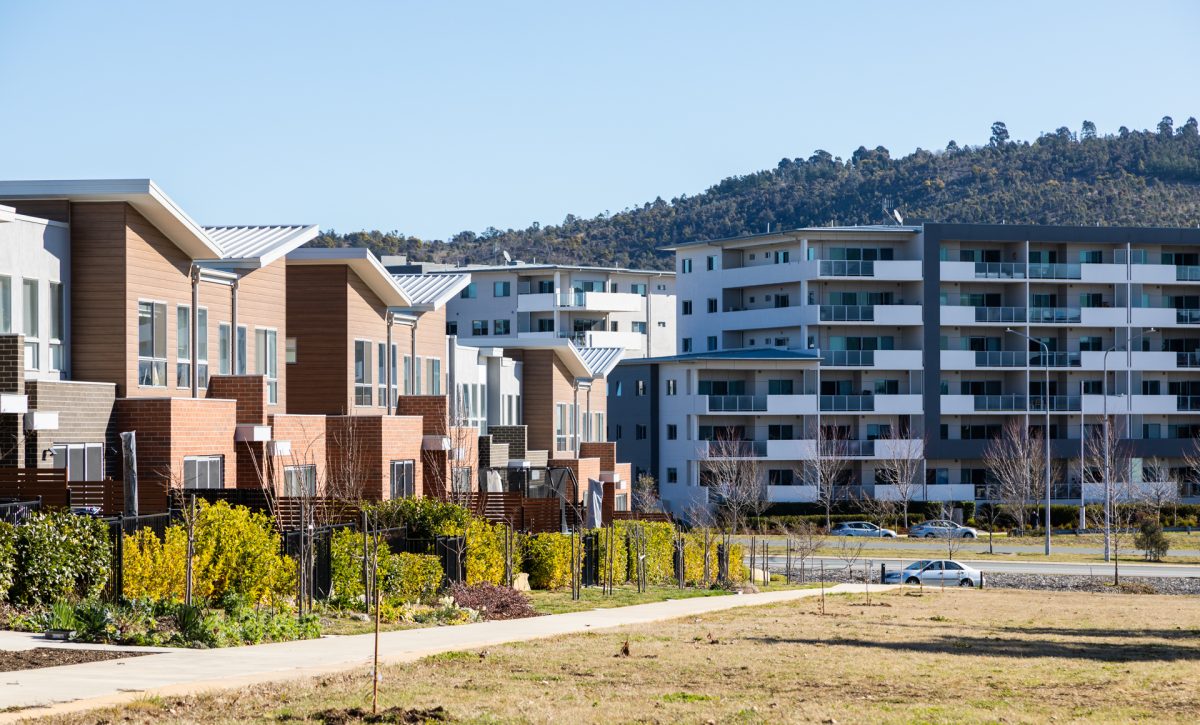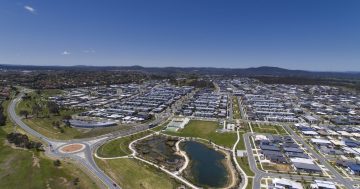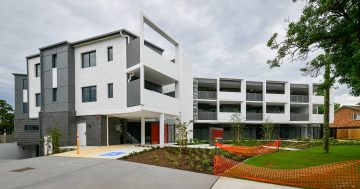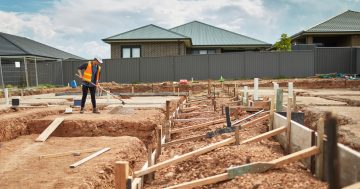
Greater density is coming, but how it is achieved is the question. Photo: Michelle Kroll.
The ACT should feel flattered.
Much of National Cabinet’s housing deal reflected what has already been legislated or will be legislated in the Territory, such as stronger tenants’ rights, rent rise limitations and the National Planning Reform Blueprint.
The push for more medium-density development in established suburbs along transport corridors and near business centres could easily have been scripted by Chief Minister Andrew Barr.
No wonder he said that the ACT was well placed to implement the measures.
The Canberra Liberals should take note that the planning changes they oppose are now likely to be adopted nationwide as cities grapple with the need for new housing without further expensive and habitat-destroying sprawl.
But their concerns, which reflect those of many community groups, remain valid.
How the new planning system operates and development unfolds are key questions, but make no mistake it is coming.
Spacious Canberra is better placed than other capital cities to do it well but the government and the planning authority need to ensure that the urgency of delivering new housing does not lower the bar on building standards, amenity and green space.
Increasing supply – for buyers and renters – is now the name of the game and the revised national target of 1.2 million homes over five years from July next year, the $3 billion performance-based funding to the states and territories and $500 million for enabling works to help bring new housing online show governments are taking matters seriously.
The tenants’ rights deal also acknowledges that for many buying a home is no longer an option and that a growing part of the voting population will rent.
For the Greens, who are holding up Labor’s Housing Future Fund in the Senate, these measures don’t go far enough and limiting a rent rise to once a year will still mean renters will still be squeezed, and for some pushed into homelessness.
Mr Barr and Prime Minister Albanese won’t countenance rent freezes but argue more rental properties will bring down rents.
The Greens’ brinkmanship has raised awareness of the housing crisis and won significant concessions. It is time for them to take the win, even if it seems like giving in, and get out of the way of what new housing will flow for social, public and private housing under the Federal Government’s programs and its $10 billion investment fund.
It may not solve the problem but it is a start and offers some hope to those wondering how they or their children will keep a roof over their heads.
How Australia came to this has been a policy and planning failure decades in the making.
There remains unfinished business if any of these supply-side remedies are going to work.
But will Labor have the appetite for refreshing its mothballed policies from 2019 and wind back the overgenerous tax treatment of property that has fed prices and contributed to the crisis?
And will it be able to better coordinate Australia’s migration program to accommodate the thousands of new arrivals that will continue to put pressure on the housing market?
The Commonwealth acknowledged this issue with the agreement to develop a multi-year planning model for migration, to improve collaboration with states and territories on migration settings.
Governments will also have to find a way to encourage people into the regions to curtail the current trend toward megacities.
Perhaps Canberra can be a template for that too.





















